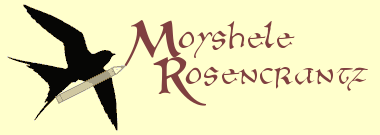An interview recorded by my cousin, which I then transcribed and translated from Hebrew
Lova: I said goodbye to him, shook his hand, and started walking. At first I wore my white cork hat. But suddenly I heard a wagon squeaking – the wooden axle of a wagon turning and squeaking, and I was afraid of being seen with my white cork hat. So I took it off, and put on the grey Arabic headscarf instead, and started slowly, slowly to walk, until I finally reached Metulla. But when I got there, I didn’t know how to get in. I had arrived from the Lebanese side, from the left. And everywhere I managed to get to, I came up against a deep trench and a barbed wire fence.
 |
| Lova with a hat: could this be the cork hat mentioned in this story? More samples of this British inspired fashion in the footnote section below. |
So I really started to shout, “Khaveyrim! Khaveyrim!” “Gentlemen! Gentlemen!”
They say, “Yes? What? Who?”
So I said a few words to them in Yiddish – Hebrew I couldn’t speak very well. I said, “I’m probably the man you’ve been looking for out here.”
“Really? C’mon.”
 |
| Metulla, 1931. Possibly Khakla'i on the horse? |
 |
| Painting of Metulla, 1940, by Aharon Kahana |
And really we fell asleep – it didn’t take much arguing to convince us. Then, at four o’clock in the morning, maybe a quarter past four, or maybe a quarter to five, he came, woke us up, and took us into the taxi. He took the boy to Tzfat. And since then, to this very day, I haven’t seen the boy again and haven’t heard anything about him. He went to stay with some relations in Tel Aviv. And I drove with the taxi driver up to Tiberias. I knew I had a cousin, or rather a cousin of my father’s, from the pioneer group in Saratov, in Russia, who had moved to Israel, and I thought I had heard he was in Dganiya. So I went to Dganiya. I spent the night in Dganiya Aleph. And I looked for Gelman in Dganiya Bet. I didn’t know he had changed his name to Gil’adi. And I couldn’t find him anywhere.
 |
| Dganiya Alef (the first Kibbutz in Israel, just south of the Sea of Galilee), 1934, three photos |
I couldn’t find him there, and I couldn’t find him at the Sea of Galilee. So I decided to go to Haifa. There I had another cousin, and I was very happy to see her. And then I went to Tel Aviv, where I had another cousin, David Freedman, David Arieh Freedman, an eye-doctor and an author. And an art critic. I stayed with him a few days, and then I went to Jerusalem, to visit the Rabbi Kook (the chief Rabbi of Israel) and his brothers, who were also relations of my father. So I met the Reyb Khaim Kook, and he was completely blind – couldn’t see a thing. Also his wife Sarah. They had visited us in Russia, so that I knew them very well. And I also saw some other relations.
 |
| HaRav Abraham Isaac Kook, the first Ashkenazi chief rabbi of the British Mandate of Palestine and Lova's cousin, 1924 |
I said, “Rabbi, I walked for two years not in order to become a government clerk. It’s not such a great honor. I want to be a pioneer.”
“Oh...” he said. “A pioneer! A pioneer to build the land, this is the greatest deed in the world.”
And then I told the rabbi briefly about my travels, and he said, “How’s this now? I sent you an immigration certificate to Istanbul, to Kushta, for you to come.”
I answered, “Only I didn’t know about it, I didn’t hear about it, and in Kushta nobody knew anything about me. I was far away from Istanbul. I was somewhere else, and I never found out. I would have been delighted to have been able to cross the border legally a long time ago!”
And that’s how it was. Only when I visited the rabbi did I find out that they had sent me an immigration certificate to Turkey. You see, when I was in Turkey, in Sebinkarahisar, I once wrote a letter to my cousin Leah Yablokovskaya, may she rest in peace. And she sent the letter on to the Rabbi Kook, and on this basis he sent an immigration certificate to Istanbul. Only, they didn’t know the exact address. I was wandering about, and I didn’t know or dream that anybody was planning on sending me a certificate, so that the certificate reached Istanbul, while I reached other places. We didn’t meet each other. [he laughs]
Continued in Part 10...
A (longish) footnote regarding cork hats
Regarding Lova's cork hat - this fashion was inspired by the British soldiers in the mandate period, who wore cork hats which they called “pith helmets”.
This picture is taken from one of my favorite books as a child: In the Land of Lobengulu King of the Zulus (בארץ לובנגולו מלך זולו), written and illustrated by Nahum Gutman, published 1939. In the picture, Nahum paints himself with a cork hat, exploring the African safaris.
 |
| Nahum Gutman, Lobengulu King of the Zulus |
Here we see travelling fashion in Israel in the 1930's: khaki shorts, three-quarter length socks, Arabic keffiyeh, cork hat:
 |
| 1939, photo by Nurit Grindlinger |
And a certain Shlomo Kramer (unknown stranger) with a similar cork hat:
 |
| 1938, photo by Nurit Grindlinger |
The originators of this fashion were the British empire troops. Here's one picture in India:
And another in Iraq, 11 June 1941:





No comments:
Post a Comment